by Karl Ammann, Published in Swara – March 3, 2021
In the investigative article below, reproduced with permission, wildlife crime investigator and photographer Karl Ammann exposes corruption, forgery, and fraud on a massive scale in the export of African elephants from Zimbabwe to China.
In the image below (Zimbabwe accounts), the Zimbabwe authorities indicate that they sold 101 elephants to China and Dubai. But the list does not include a 2015 shipment of 24 elephants to Qinguyan safari park (see the attached letter about my visit Karl letter_oct15). Other data I have seen state that the total import of elephants from Zimbabwe to China was 141.
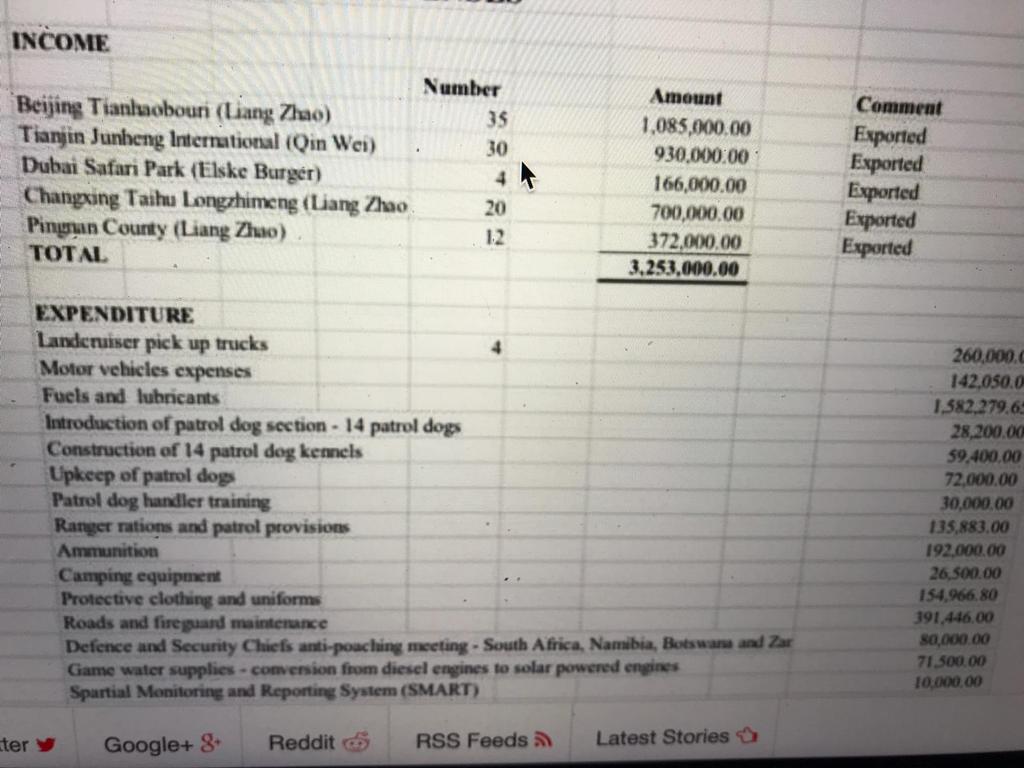
Irrespective of the numbers, what is equally interesting is that the revenue declared by the Zim Parks authorities is around US $32,000 per elephant. The issue here is that we have ample evidence that the end consumers declare they have paid a lot more than US $32,000.
- In the case of the last 32 elephants shipped to the new Longemont Safari Park (of which 11 were then sent to one of the biggest TCM and tiger wine producer and 1 supposedly got killed in a fight with another elephant), the importers declare they paid US $ 125,000 per elephant; the purchase price is declared in a number of customs and import documents (see attached document 2017 project) Ordos City Longsheng Wildlife Park Co Ltd announced the tender announcement for the introduction of live African elephants_云同盟 for an example).
- China has duty free import quotas for elephant, rhinos and pretty much everything else for that year (see below Quotas for animal imports) and as such there would not have been any import tax or VAT so no need for a buyer to under or over declare the purchase price.
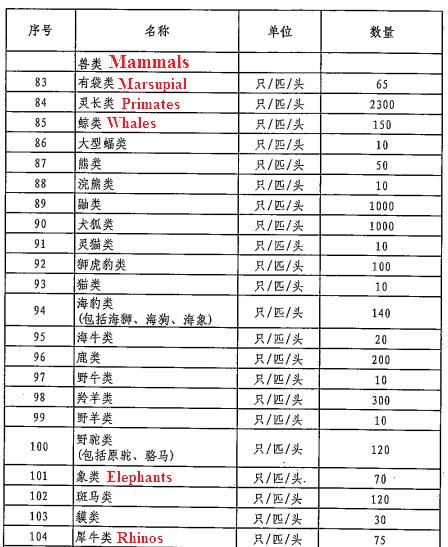
- Under the CITES convention, import quotas are unheard of. Countries establish export quotas to ensure a supposedly “sustainable” levels of export, which are signed off by the country’s scientific authority. In the case of the Chinese import quotas, they were signed off by the Ministry of Finance and Forestry but there was no “Non-detriment Findings” since the corresponding off take not being detrimental to any wild populations of that country.
- The 2017 shipment also involved a documented onwards trading; Asian elephants are generally also rented out by the owners to zoos and safari park at US $10,000 per month. We have 2 documents (see attached documents 1- 2019-12-17 09 07 30_20191217091449-1 and 2- Ordos City Longsheng Wildlife Park Co Ltd won the bid announcement for the project of introducing live African elephants-Tianjin Junheng International Trade Co Ltd) showing the Tender information in which Ordos Longshen Wildlife Park won a tender for 4 African elephants in 2016 bidding Yuan 3,488, 888.00 (US $128,000) per elephant at the time of transaction.
- In a conversation with a well-informed animal dealer in South Africa, he told me that he was aware of a US $100,000 price tag per Zimbabwe elephants for each of the ones shipped by an Elske Burger to Dubai in 2018.
Overall, it is clear that the source country, Zimbabwe, despite having spent considerable resources in helicopter time and holding of the animals for month in a boma at Hwange, only ended up with about 25 % of what the end purchaser paid for the elephants. The following question arises: how are the remaining 75% shared? There are the transport costs, which generally involves a 747 cargo plane, and then all the kickbacks, bribes and commissions that seem to go to a range of players. In the case of Zimbabwe, these include well-known Chinese brokers. There is also reliable information that the National Parks Board officials cashed in, and there are two brokers/agents listed at the China end that would have added their margin. The incentives for CITES import permits are said to be considerable. We heard, from several sources prices in the region, of prices of US $160,000 per permit and per shipment. We assume that the same happens at the Zimbabwe end.
The money flows, which often seem to go via middlemen in Hong Kong, seems to involve standard patterns of money laundering and tax evasion. Overall, a wide range of infractions of national laws at the demand and supply end. This of course would mean that none of the corresponding CITES permits could be legal. An interesting component in this is that the new secretary general of CITES, early on in her administration, was taken to see the last lot of elephants exported, the 32 going to Longemont. At a press conference in Geneva she confirmed this visit to the holding bomas in Zimbabwe, indicating that they looked to be in good condition as far as she was concerned!!
When we visited the last 32 elephants that went to Longemont a few days after their arrival there, we encountered four Zimbabwean keepers who had travelled with the elephants and who were still in charge of them. There seems to be a guarantee period, in the contract, and the Zimbabweans were responsible for the wellbeing of these elephants for another three months; during that time, the local and Thai mahouts working at the facility were not allowed to interact or train the elephants.
Zimbabwe is now one of the most corrupt countries in Africa (based on the international corruption index (see African Union image below); it is a country where the state is short of resources for any aspect of development including providing basic social services. If 140 elephants were sold at US $32,000 each and the final price collected from the end consumer was US $125,000 we are talking of some US $13,020,000 missing, which could have made a difference on many fronts.
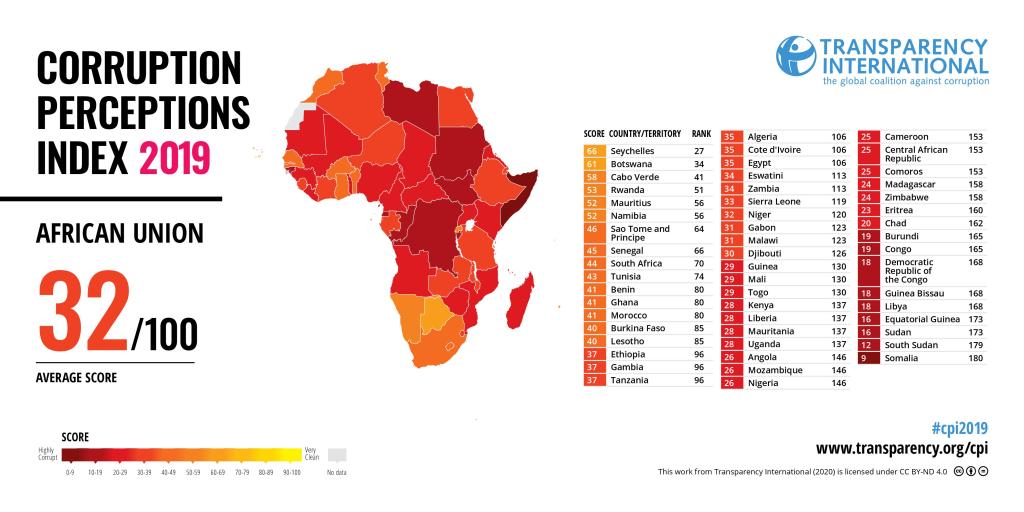
The Chinese bidding document states: “Provide a certificate of no bribery, criminal record issued by the procuratorial organ within the valid period and provide the original of inspecting when opening the bid.” I would assume that obtaining such a document would also involve paying a corresponding bribe.
Zimbabwe is of course also one of the countries in Southern Africa that has been calculating the revenue that could be raised if they were allowed to sell their ivory stocks. The above might be an indicator how that would go, especially considering the last legal sales of ivory in November of 2008. Supposedly, the Japanese and Chinese buyers are the only bidders.
ATTACHMENTS
Karl letter_oct 15:
2017 project Ordos City Longsheng Wildlife Park Co Ltd announced the tender announcement for the introduction of live African elephants:
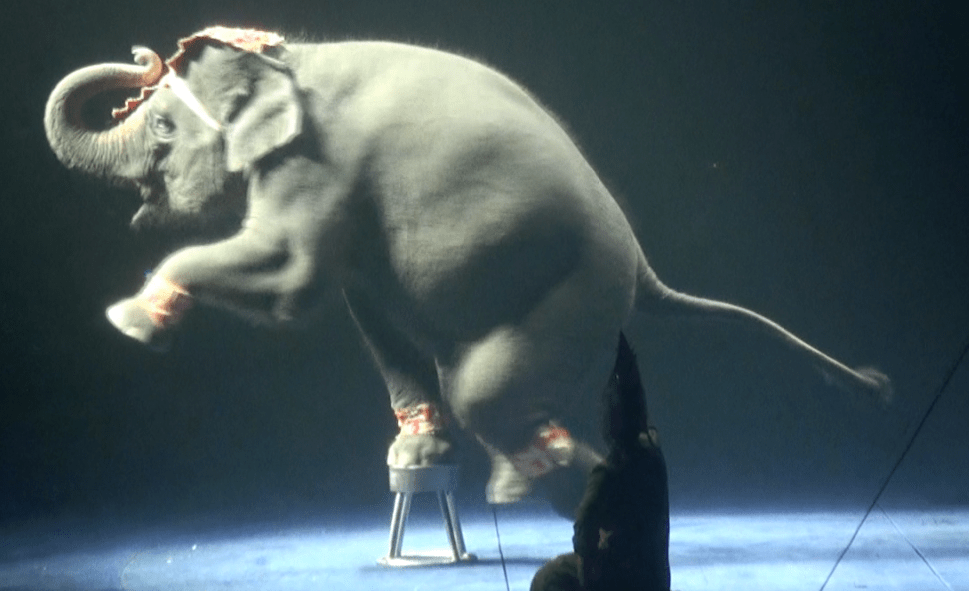
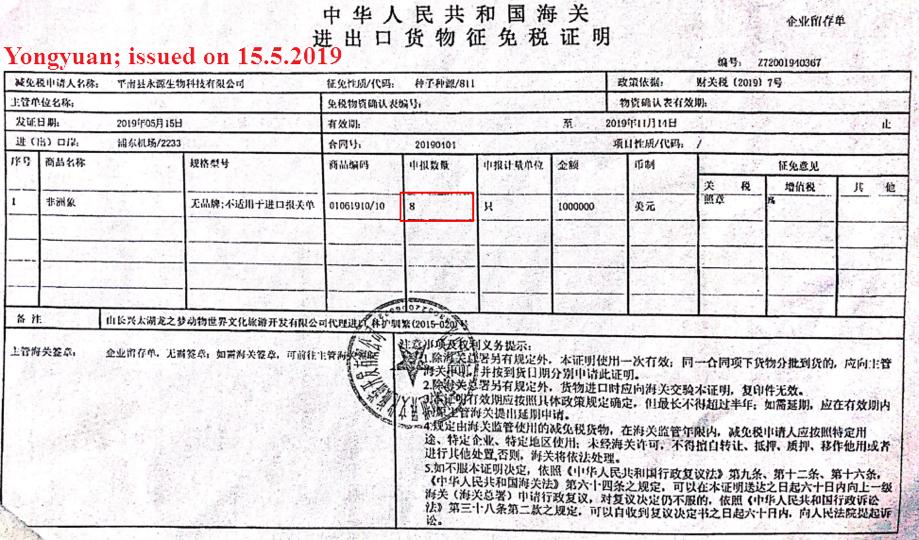
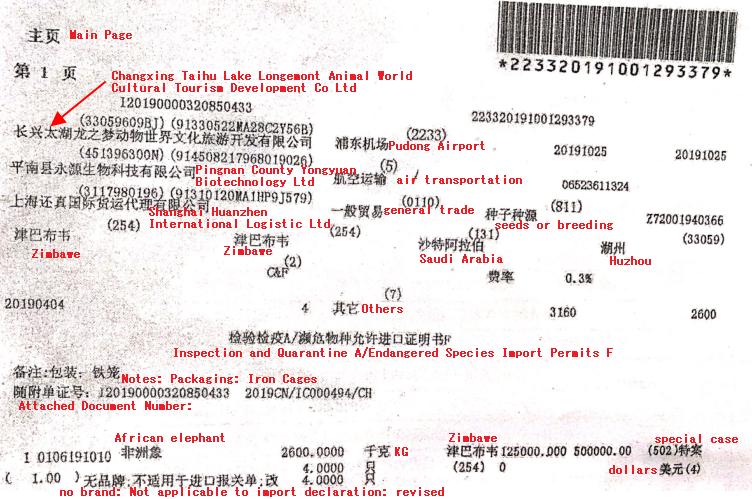
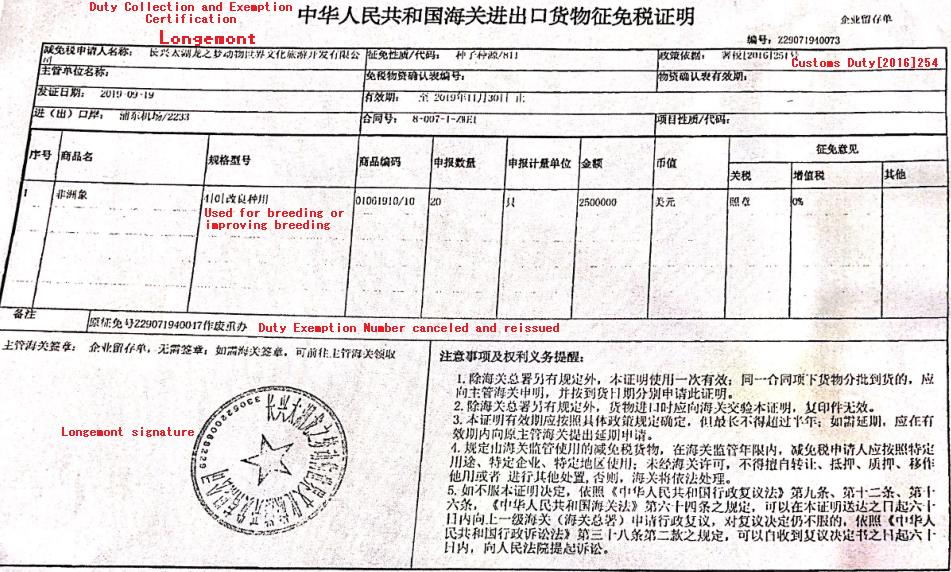
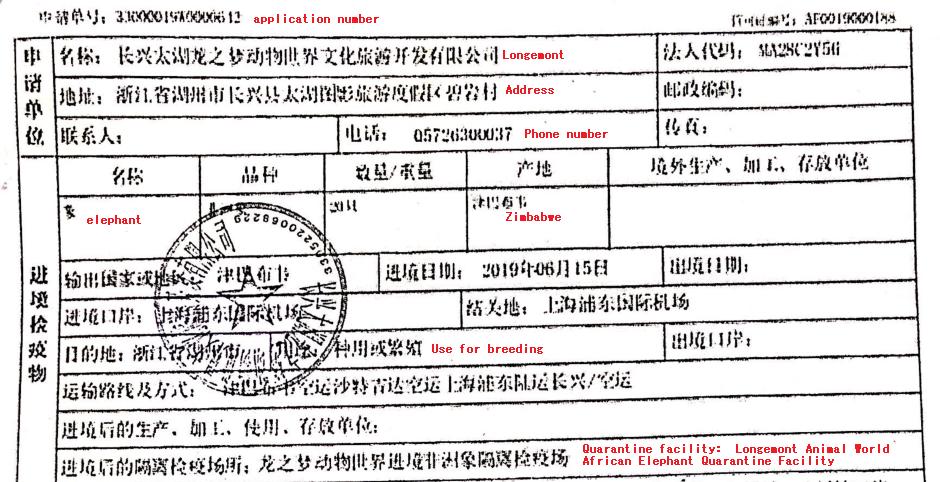
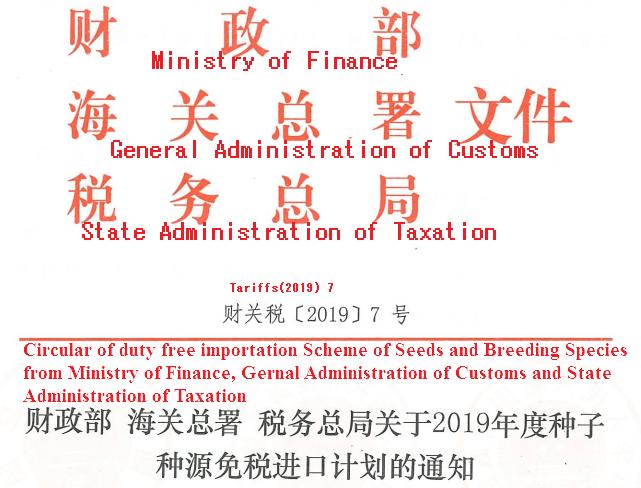
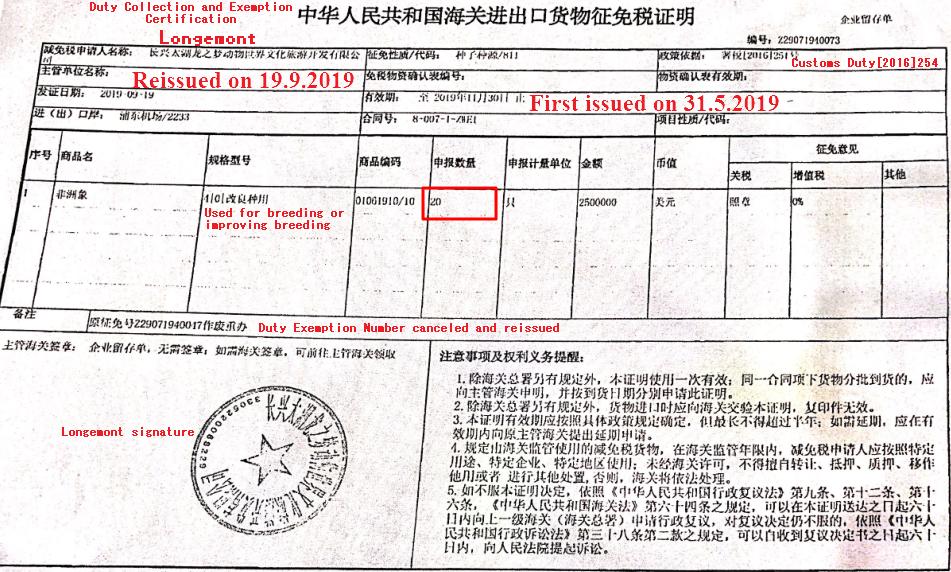
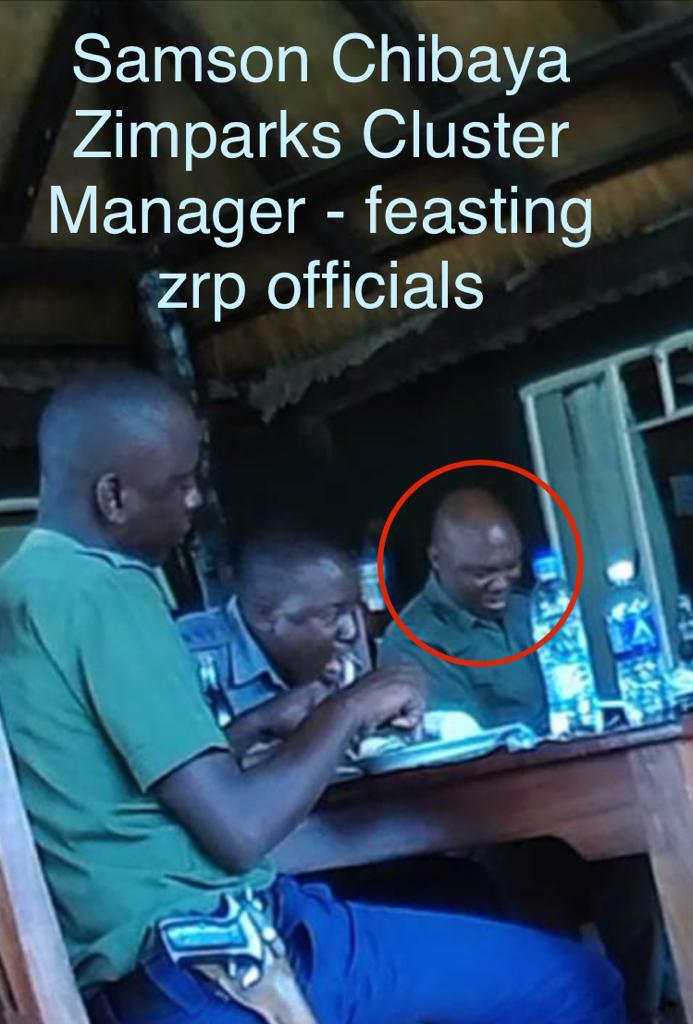

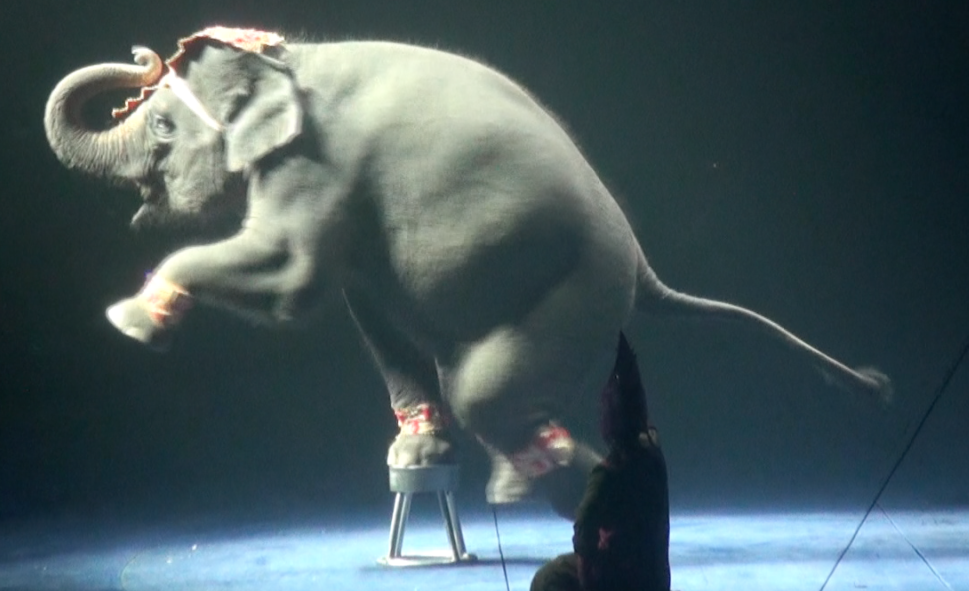
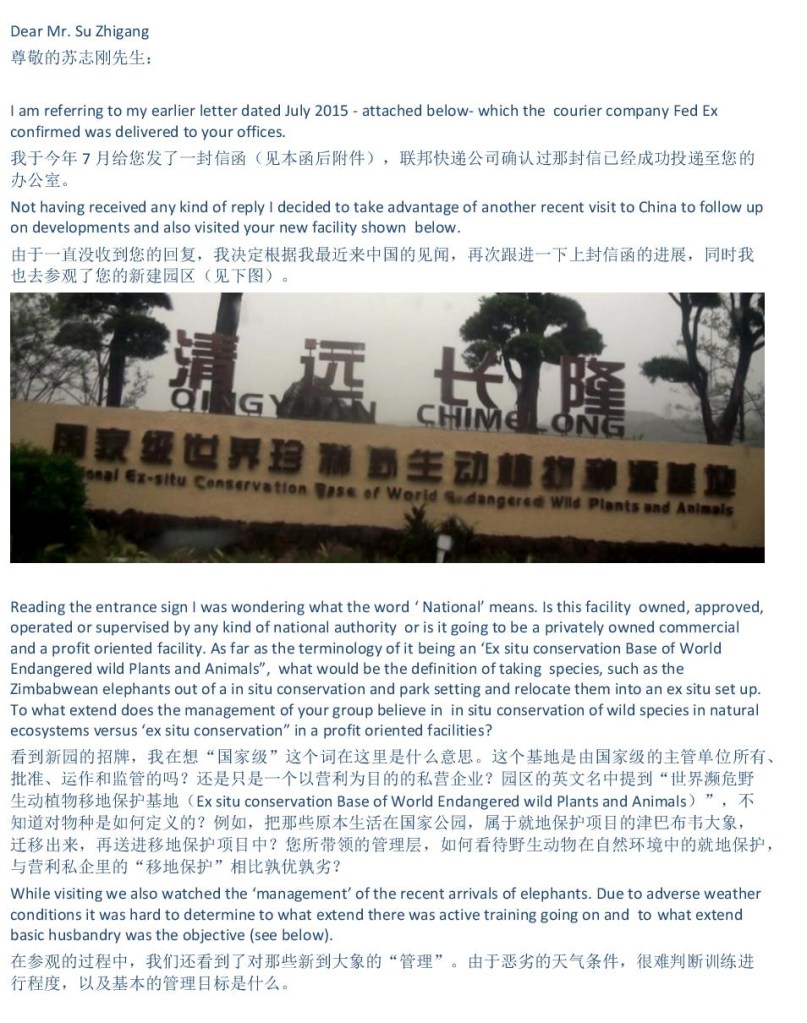
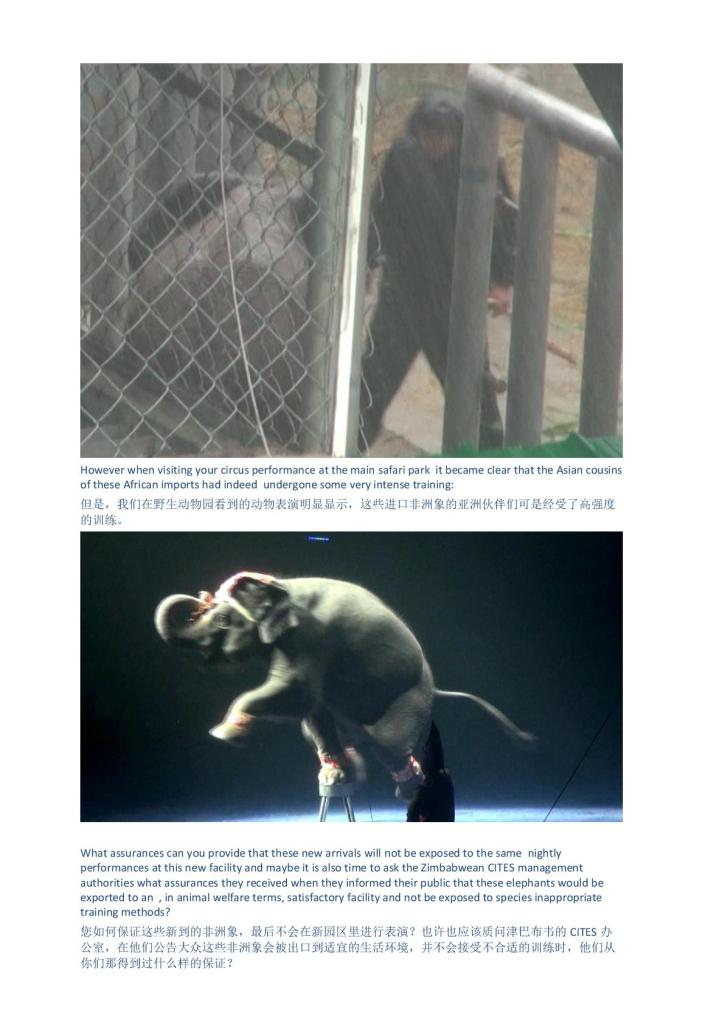
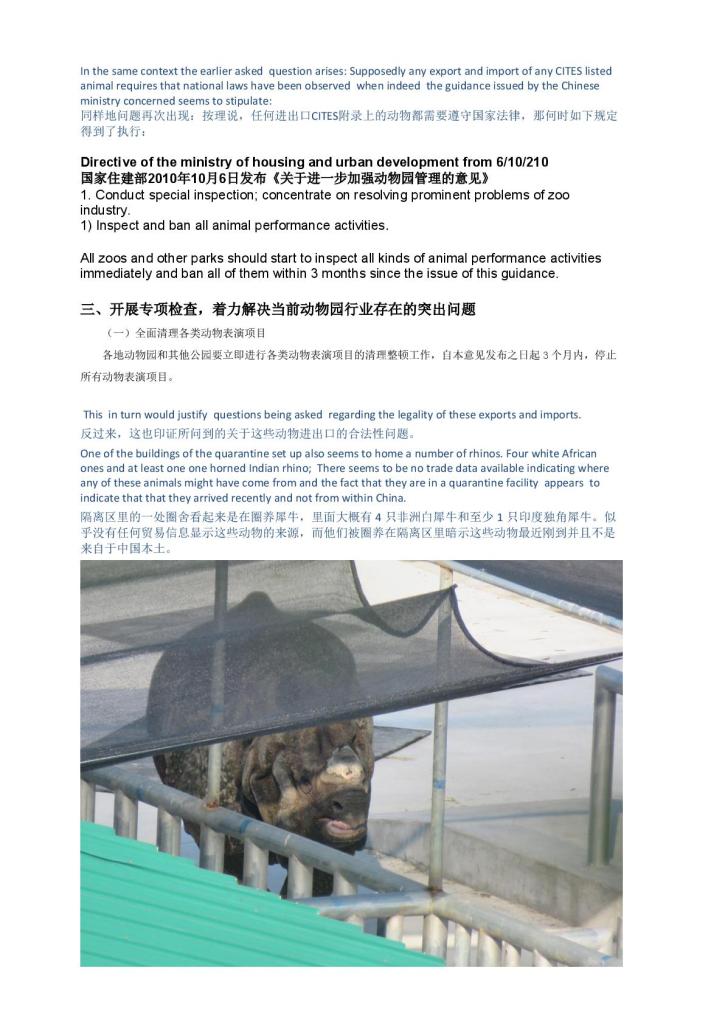
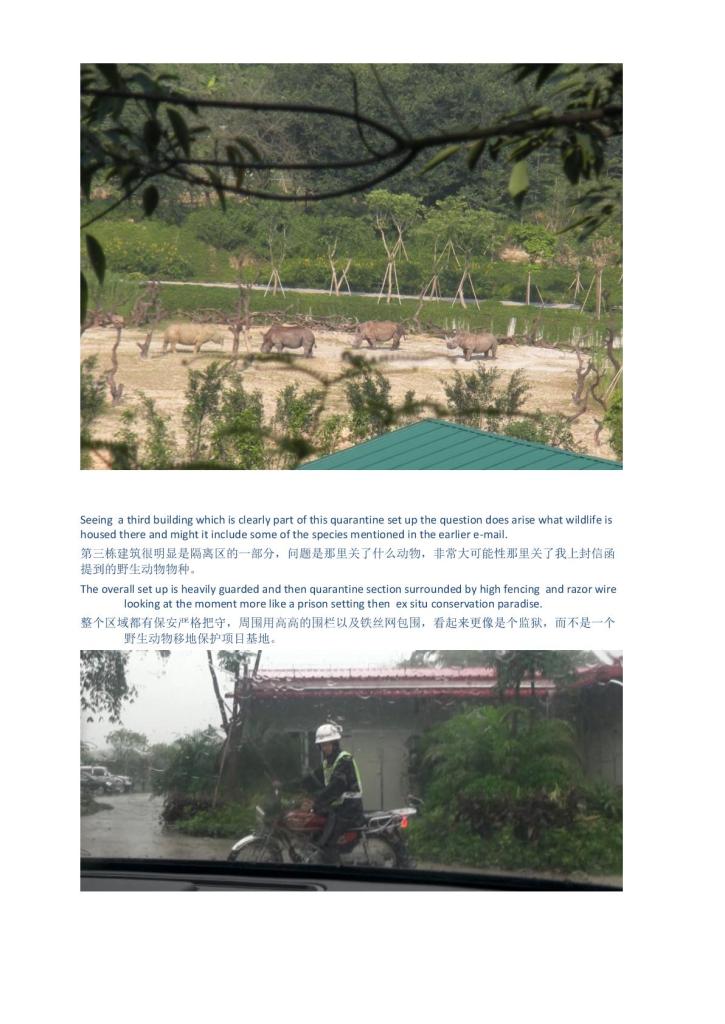
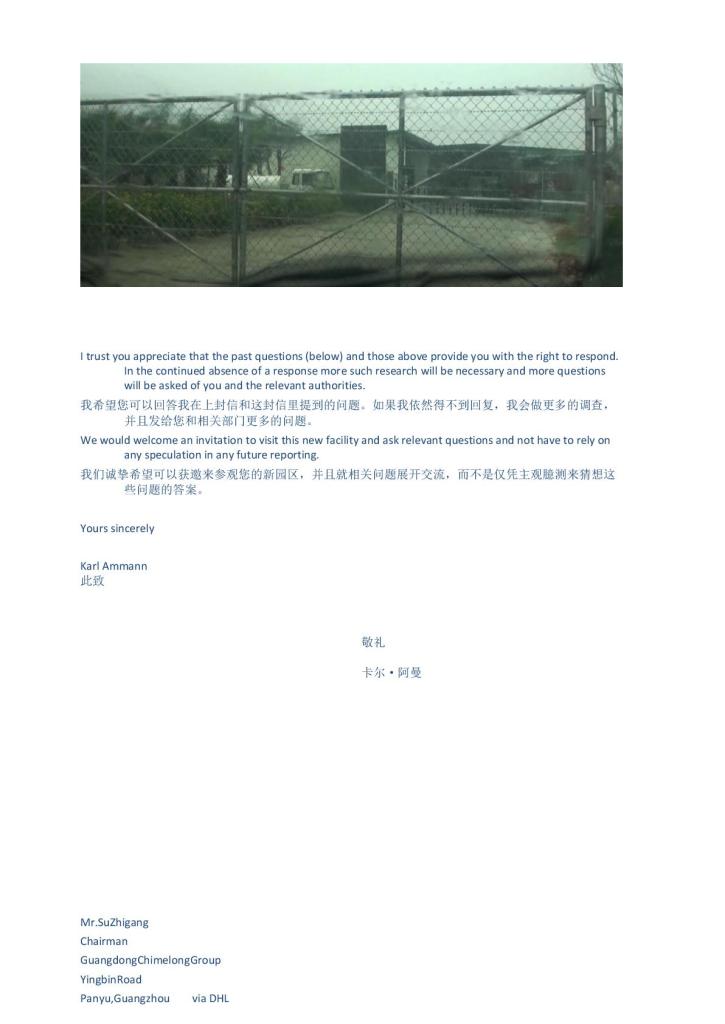
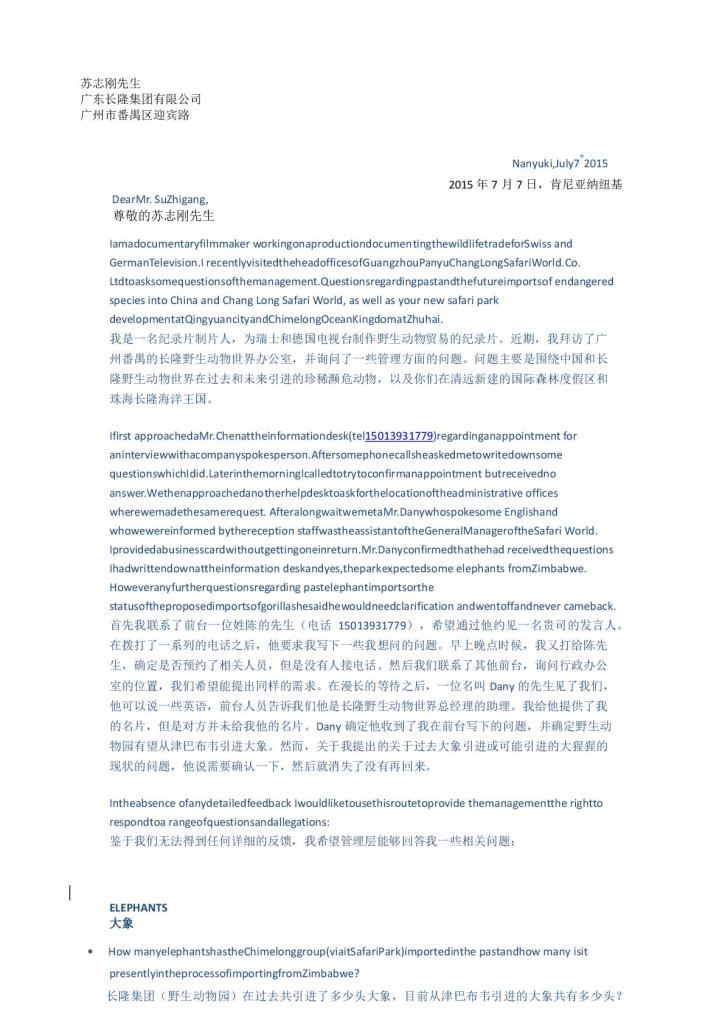
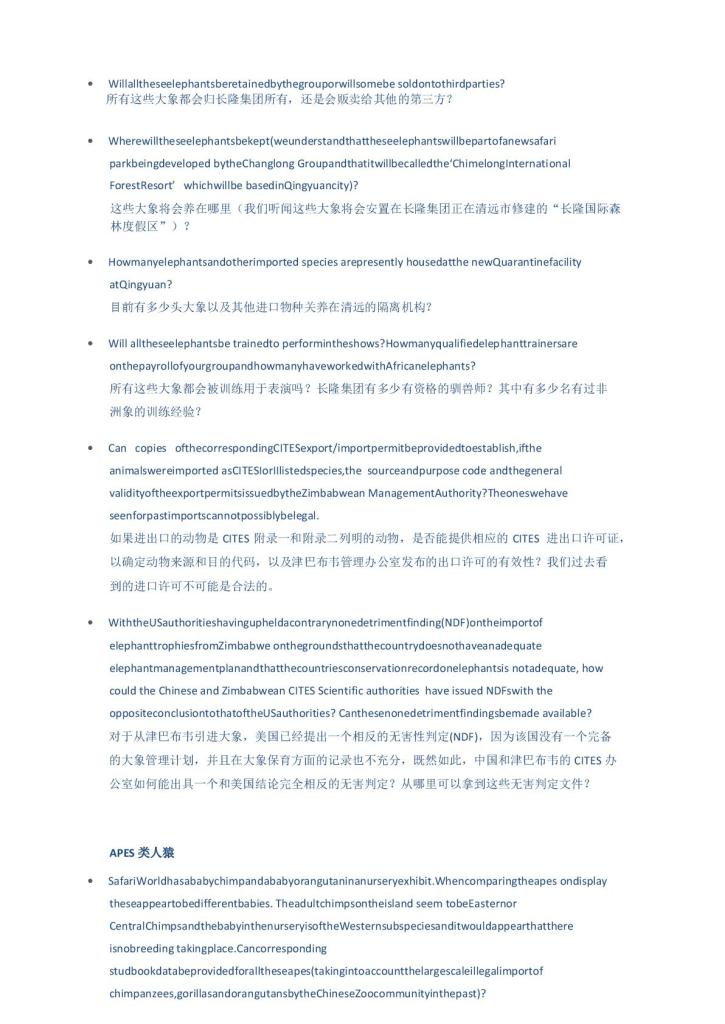
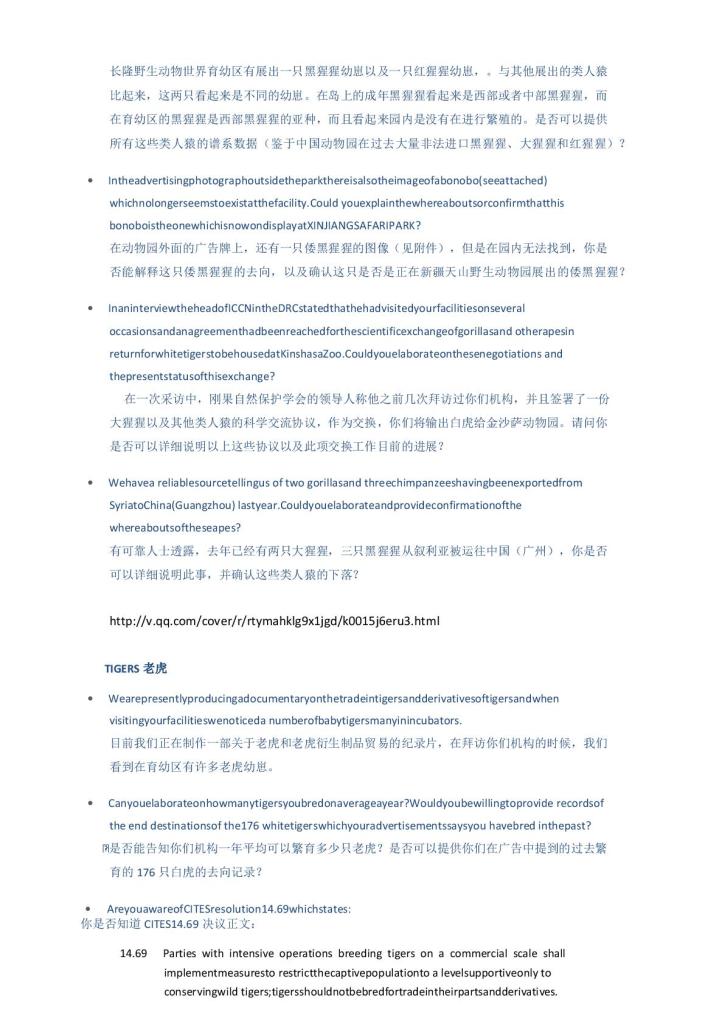
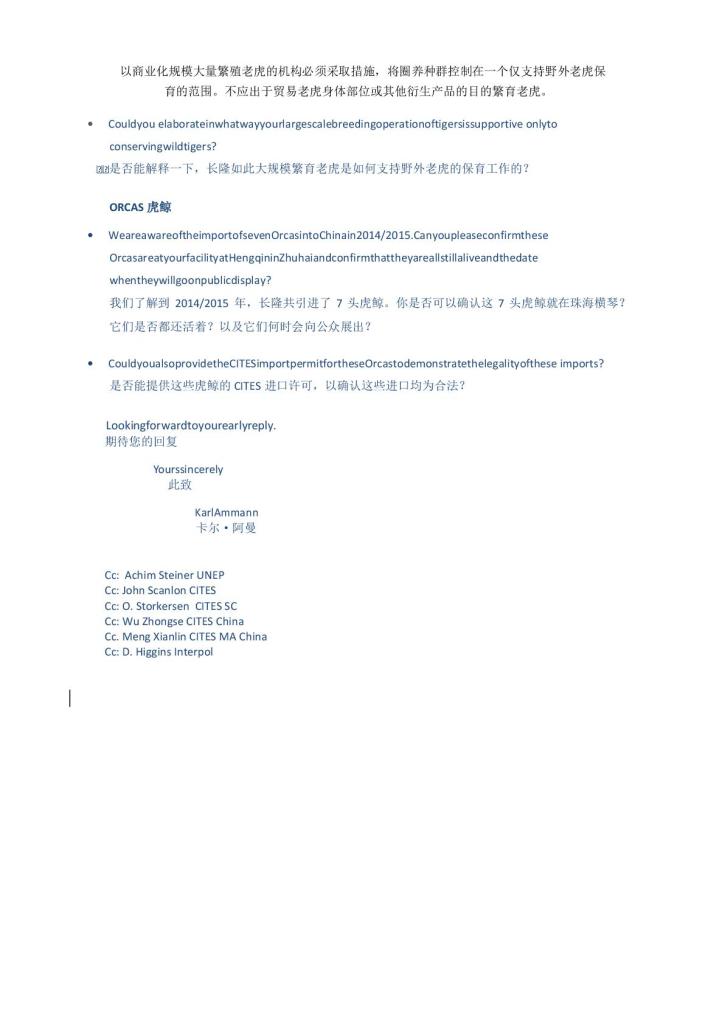

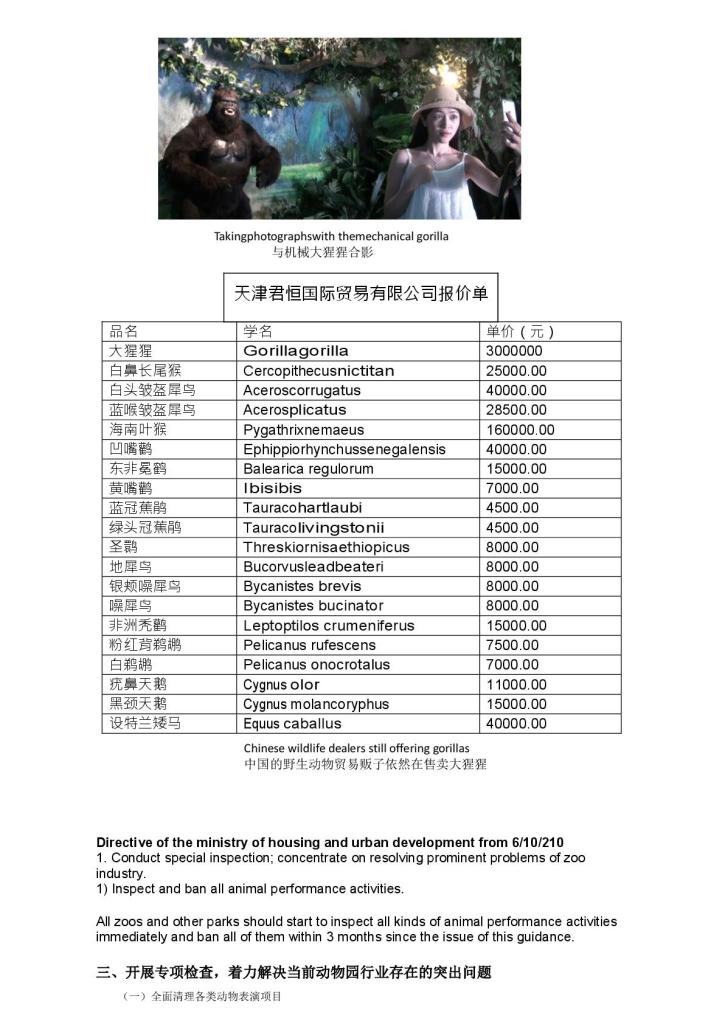
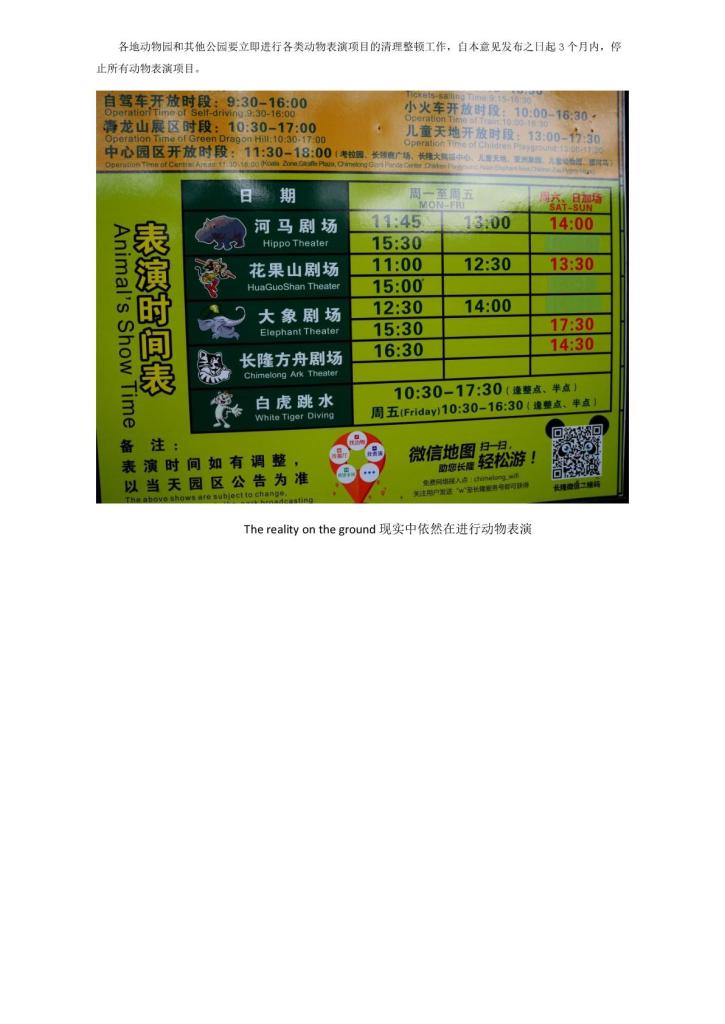
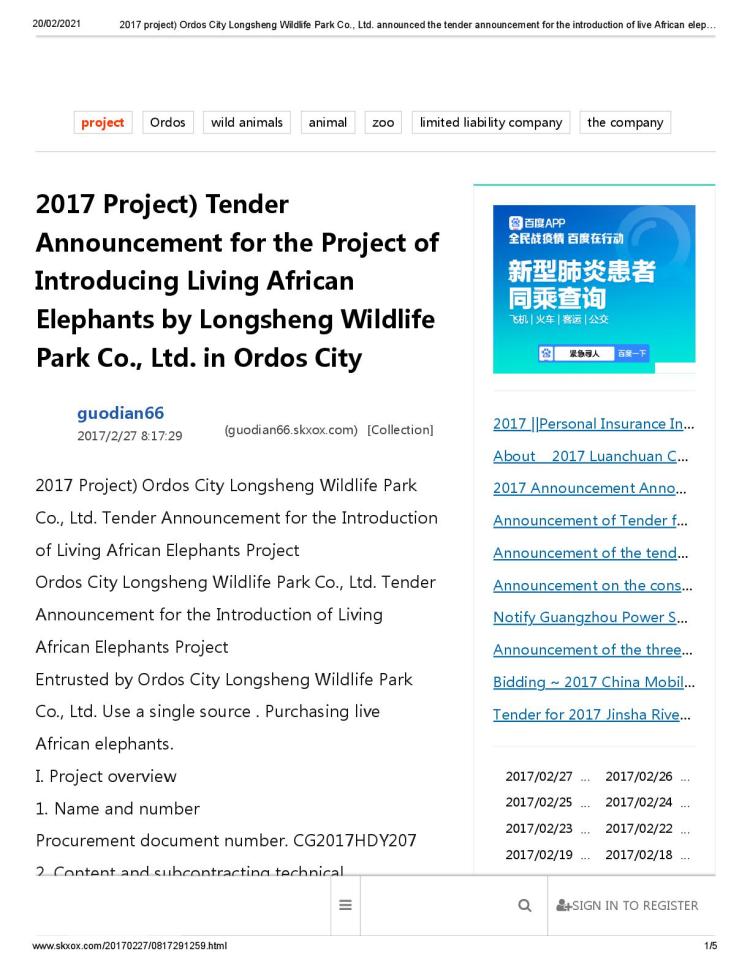
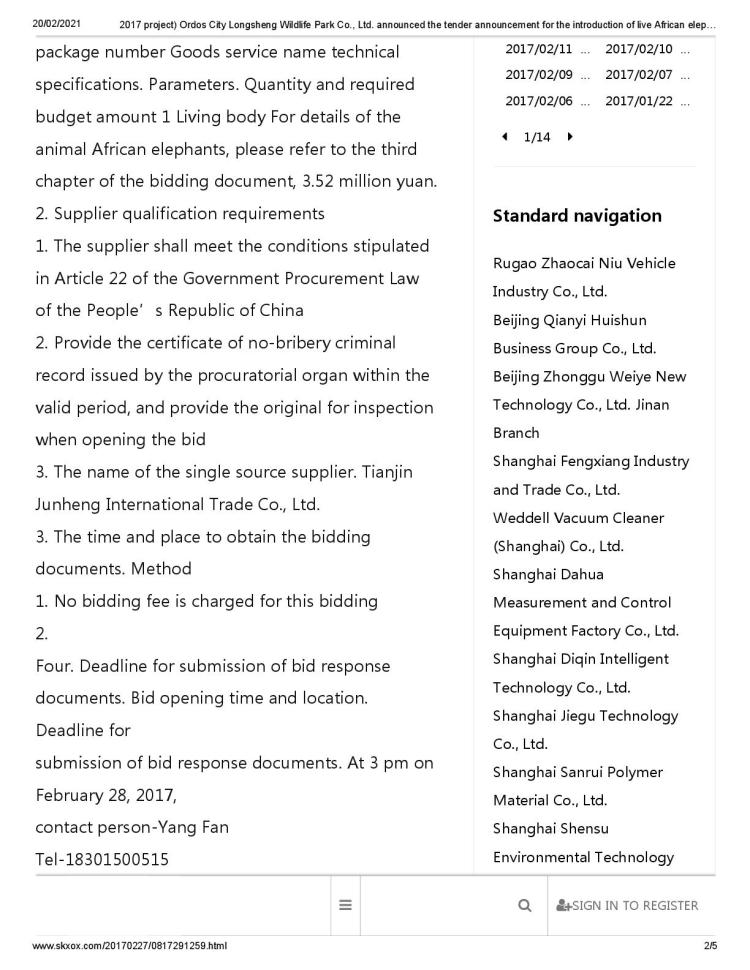
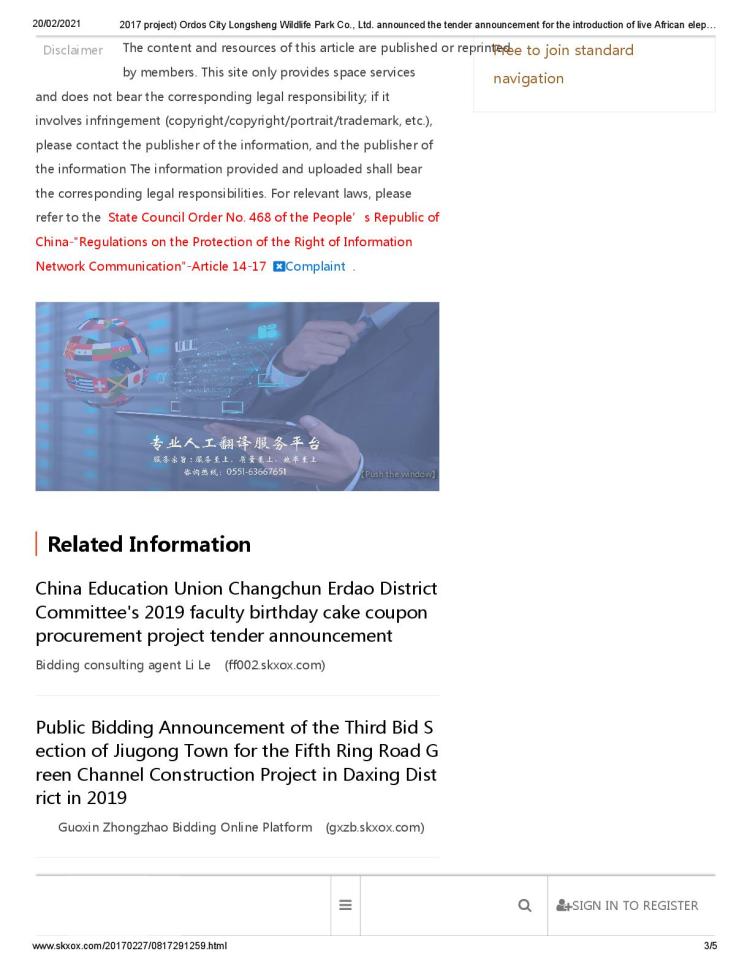
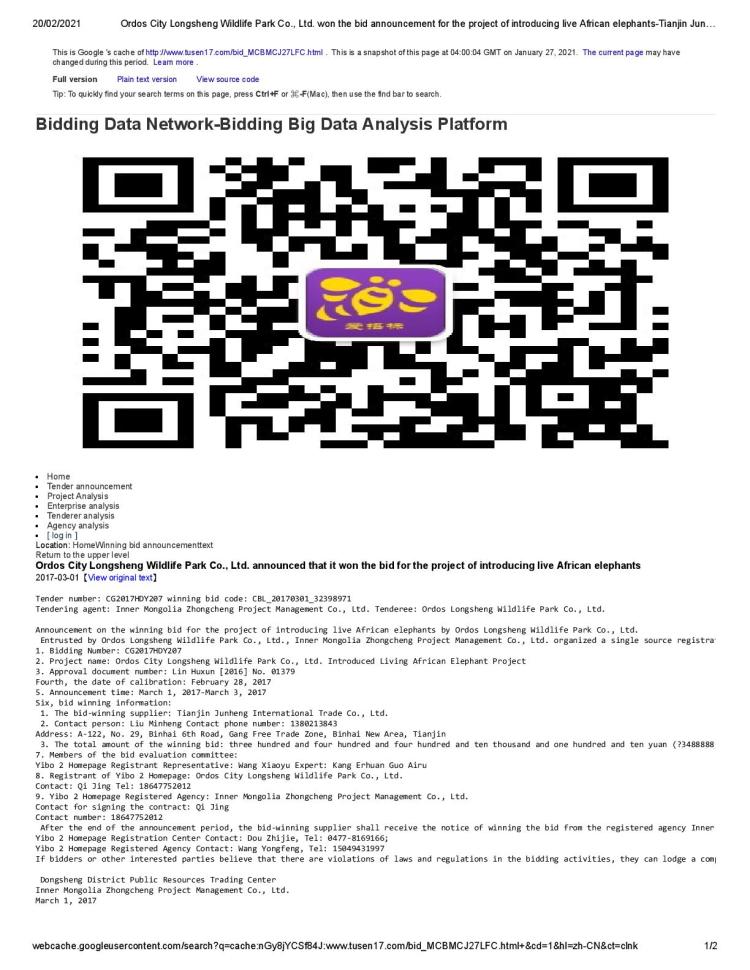

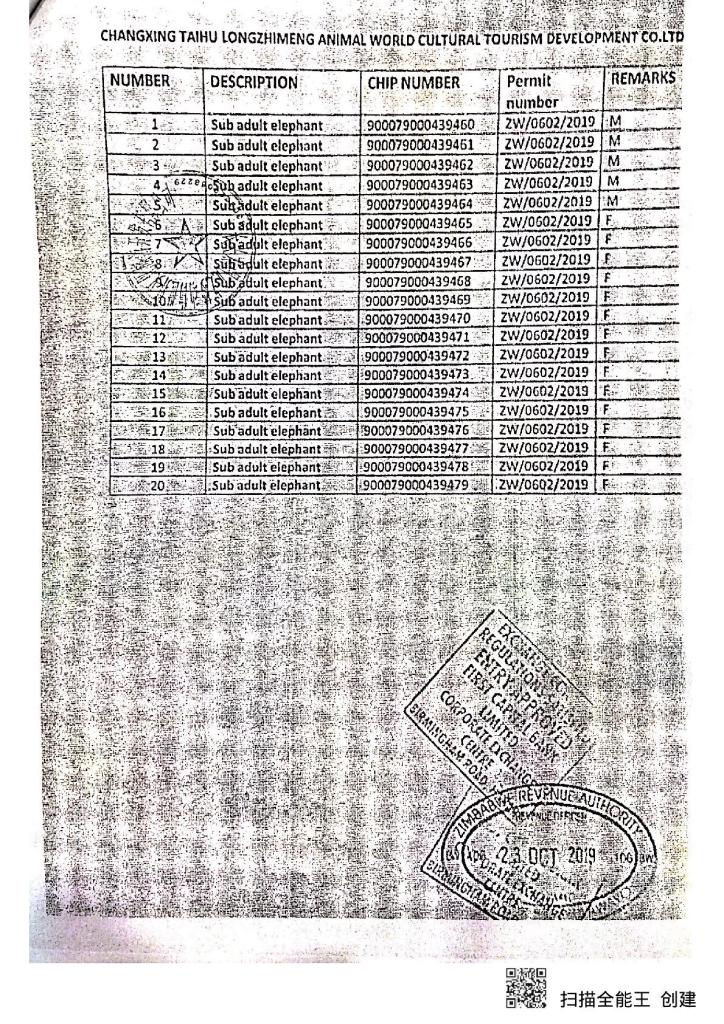
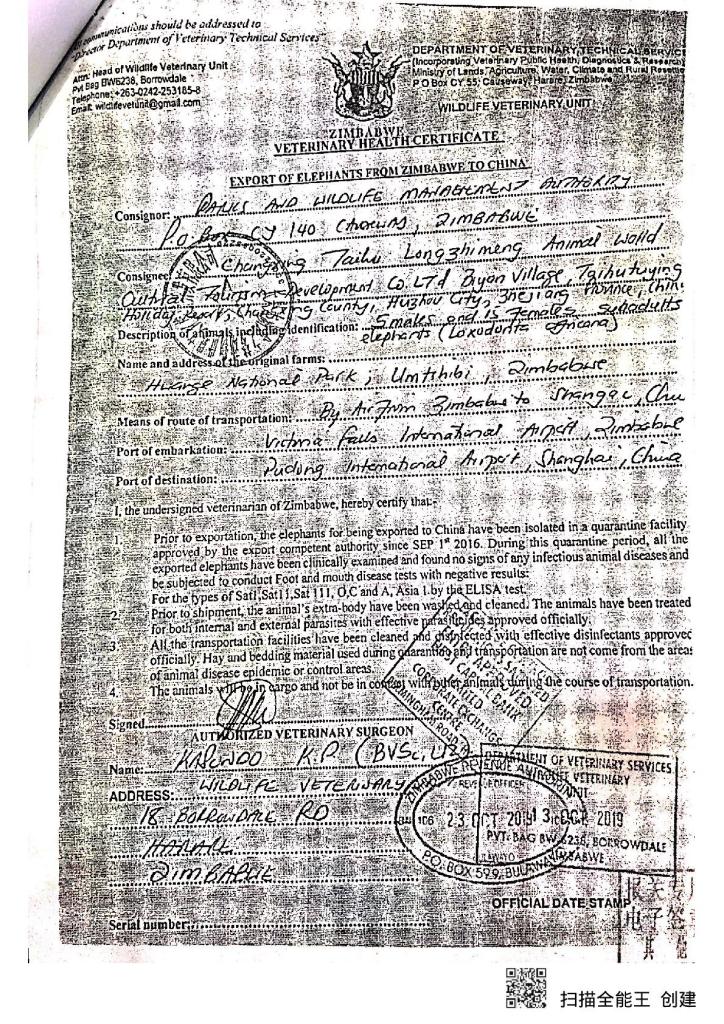
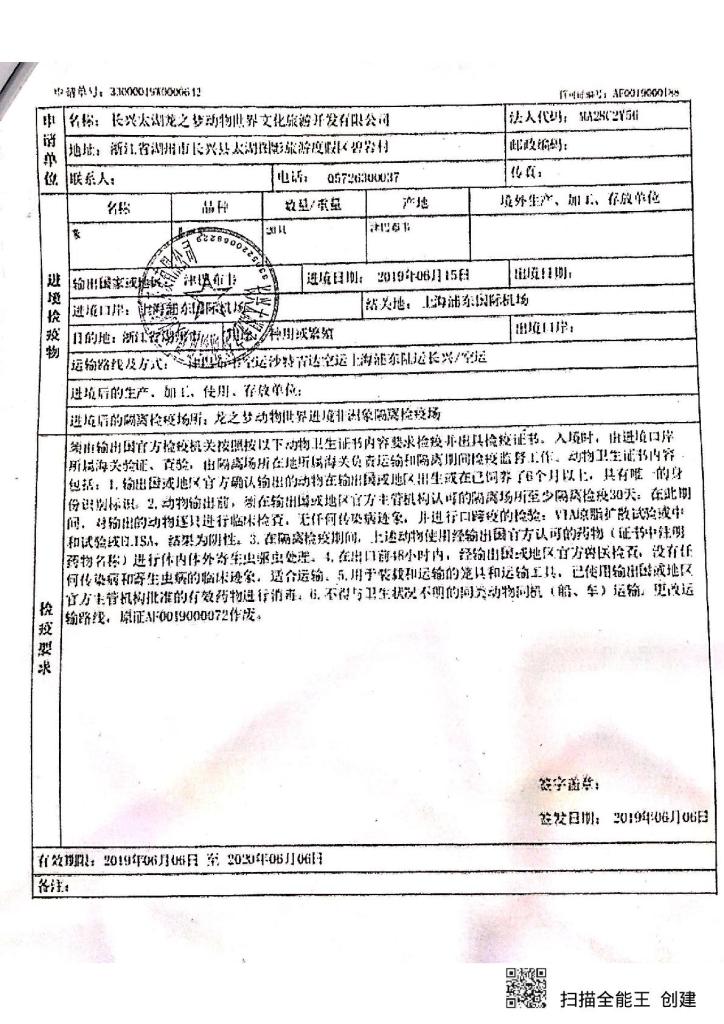
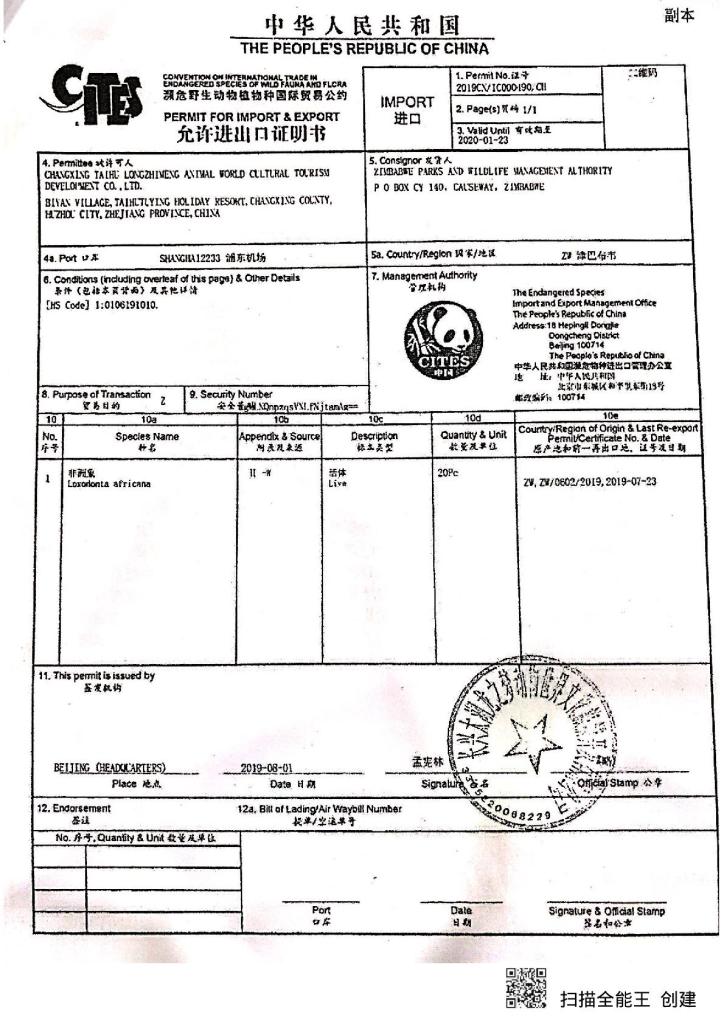
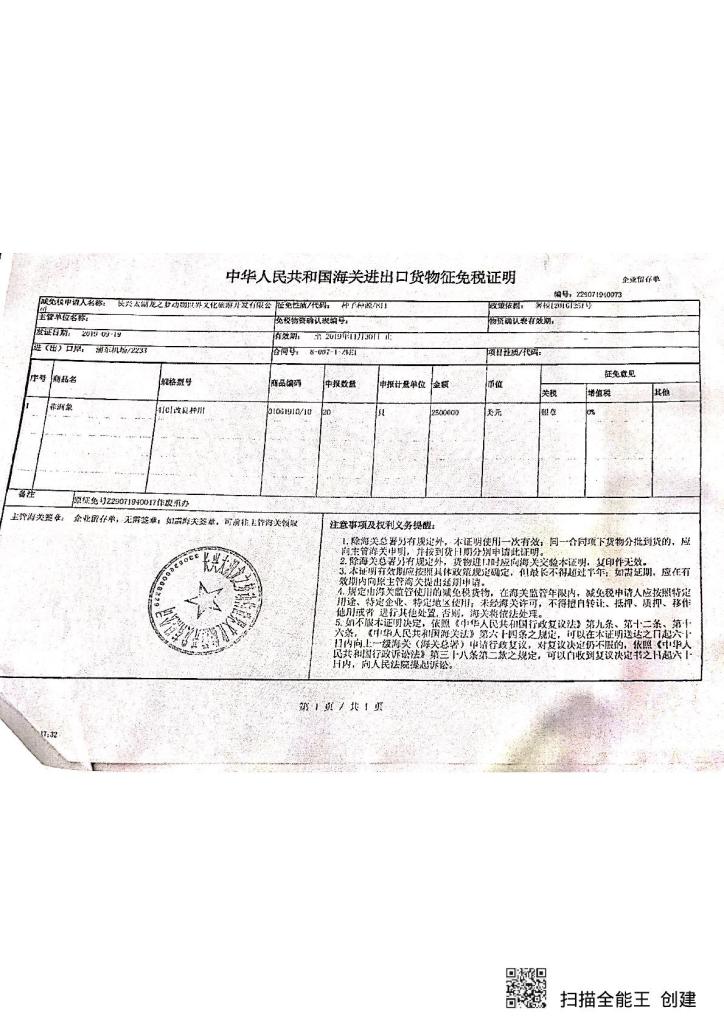
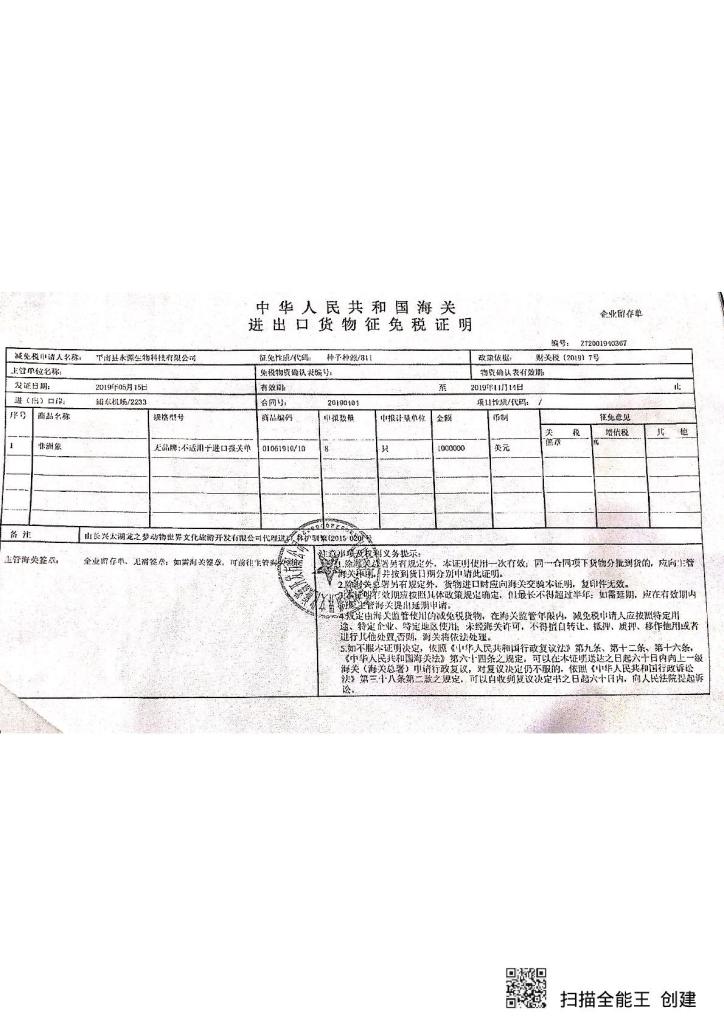
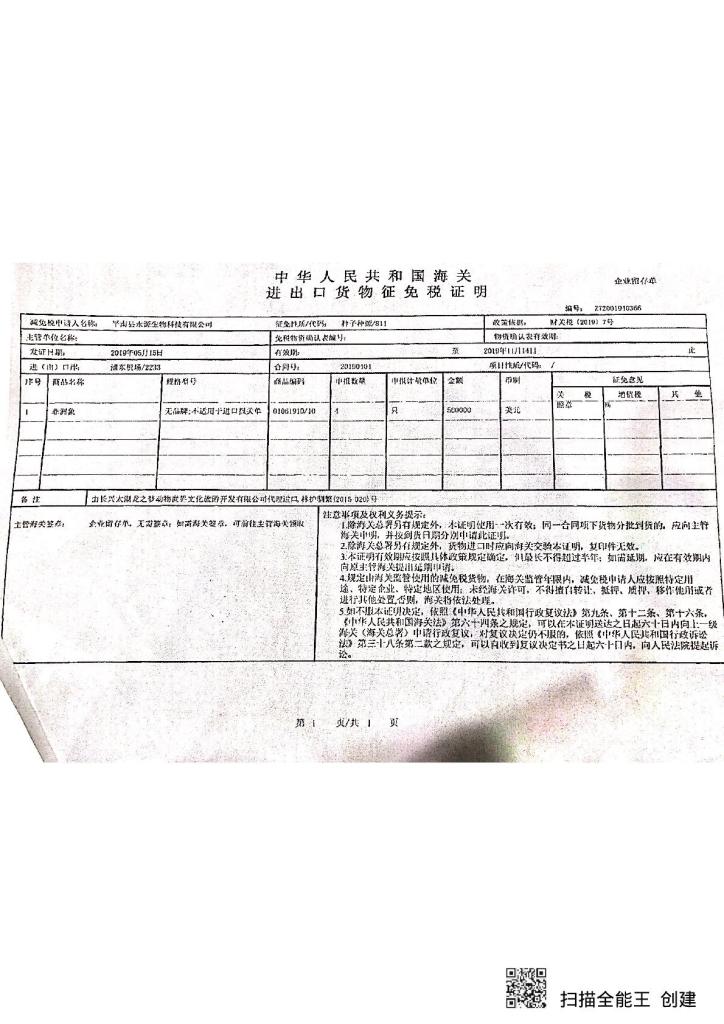
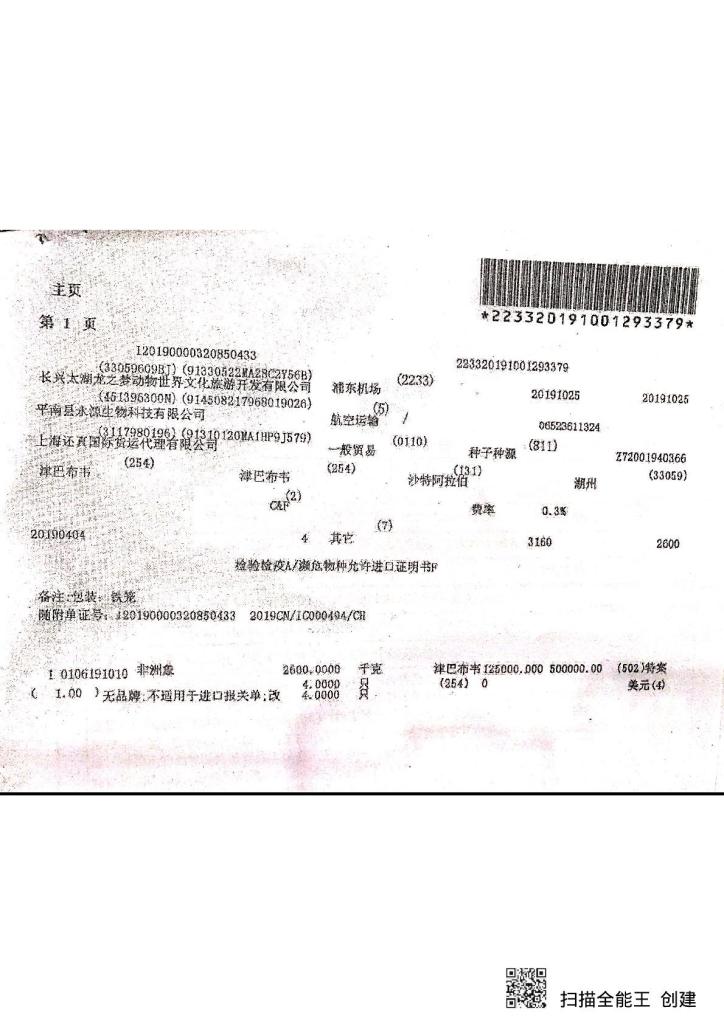
Don’t quite keep the fight up the elephants and the rest of gods creatures need advocates like you
LikeLike